It’s all about the music
Tony Smith is known around the world for having helped make music history and making Disco a global force. Today he is active on multiple fronts – introducing new generations to the “classics” in the U.S. and abroad, while remixing, producing and consulting on contemporary hits for talented new artists (e.g., Kimberly Davis and Shara Strand, both from D1 Music.)
Tony grew up in the projects of Lower East Side, NYC. His family and friends followed music, and his two older sisters sang in their own group. By the time Tony was 14, he had formed his own band. During breaks between band sets, he played records to keep the crowd buzzed. Getting people to groove and dance to his music became a passion for Tony. As a young teenager, he scoured the hottest record shops in the City, discovering the best of the latest records before they were widely known. It was on one of these forays that he met and became lifelong friends with fellow DJ, Danny Krivit.
Making his mark
Tony’s perspective on mixing records changed dramatically in the early 1970’s, when he discovered David Rodriguez Limelight), Richie Kaczor (Club Hollywood), and Nicky Siano (at the time, the Roundtable). Tony was also discovering his own DJ skills, which he would apply on his early gigs.
His big break came in 1974 when, at the age of 19, he became the resident DJ at a new gay club called Barefoot Boy. Tony already had an extraordinary knowledge of music, and very soon the same DJs that he had found so inspiring, were coming to be schooled by him. He worked seven days a week and developed a special gift for reading a crowd, shaping the spirit of the night and taking the entire house on a journey.
During these years he met and became friends with such musical luminaries as DJ Walter Gibbons, DJ David Mancuso, and Disco pioneer, Mel Cheren. Each had a positive effect on his career.
Tony was profoundly influenced by Walter’s unsurpassed DJ skills vividly on display at Galaxy 21. He enjoyed Walter’s regular phone calls asking Tony’s advice with questions like “How many horn stabs should I put in Ten Percent?” He found himself right at the heart of New York’s DJ network, thanks to David Mancuso’s Record Pool at The Loft. And before there was West End records, Mel Cheren was the first in the industry to bring Tony the advance Scepter/Wand test pressings of such future hits as “Free Man” by South Shore Commission, “Nice and Slow” by Jesse Green, and even Tom Moulton’s very first RMX, “Dream World” by Don Downing.
For the next couple of years Barefoot Boy was the “Hot Spot” for the who’s who of the record industry and Tony Smith was on fire! It was then that he started reporting his weekly top 10 lists to music publications like Billboard, Cashbox and Record World. It was at Record World that he became friends with music critic Vince Aletti.
One of the country’s top DJs.
In 1976, Tony was named one of the TOP DJs IN AMERICA by Billboard Magazine. He was reporting his top 10 most played songs for all 3 publications, which had a major influence on the way NY and the rest of the U.S. learned what music was hot in the clubs.
As the NY club scene exploded, Tony was branching out and playing a variety of NY clubs, including Fire Island, alongside such DJ greats as Walter Gibbons, Larry Levan, Roy Thode, and in places like Studio 54 and Ice Palace 57.
Tony’s next big break was becoming a resident DJ at the famed Xenon, bringing along Jellybean Benitez, who remains a close friend to this day. Xenon was clearly more commercial than where Tony was coming from, but Tony was always a musical educator and became a key to the club’s continued success. Being in such high demand, Tony was asked to do a number of remixes. His first was the now very rare underground Disco Classic: “I Don’t Wanna Lose It”, by Bambu. That success opened the door to more remixes, where he worked alongside such names as: Ecstasy, Passion & Pain, Arthur Russell, Michael Narada Walden, Tee Scott, Danny Krivit and Jellybean Benitez.
Times were changing
At the start of the 80’s, Tony played at an array of clubs including Area, Limelight (6th Ave), Magique, Red Parrot, Underground, Visage, and even opening night at the Palladium. Tony was quite over-qualified for these big commercial clubs and began to search for more musically challenging gigs, which he found in part at his next one, The Fun House, again working with Jellybean Benitez.
Musically, times were changing. With Tony’s help, so was the Fun House, which had a young crowd and was one of the very first Manhattan clubs to embrace Electro and Hip Hop. A year and a half before its release, an early demo from Walter Gibbons and a unique record for its time, “Set It Off” by Strafe, clearly had Tony to thank for breaking it in NY. Danny Krivit had given Tony his very first demo of “Rock The House” and credits Tony as the DJ who broke that record in NYC more than a year before its release.
Today, Tony is available to bring new audiences his extraordinary skill and musical catalogue. He also collaborates with others – working with Danny Krivit to bring the classics to young enthusiasts in London, with Danny and Jellybean Benitez at the Winter Music Conference, etc. It has often been observed that few DJs anywhere offer Tony’s special talent and unique selection in such a crowd-responsive way.
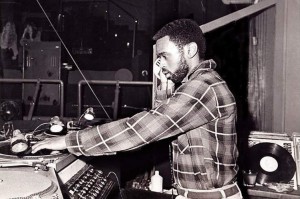
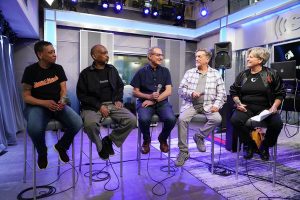
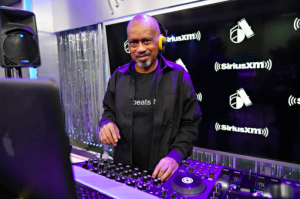
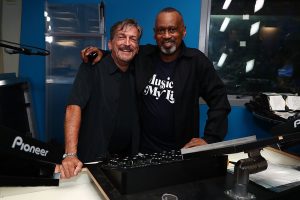
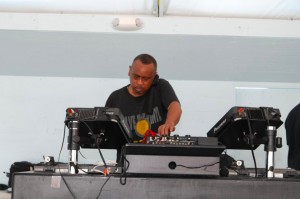


Leave A Comment
You must be logged in to post a comment.